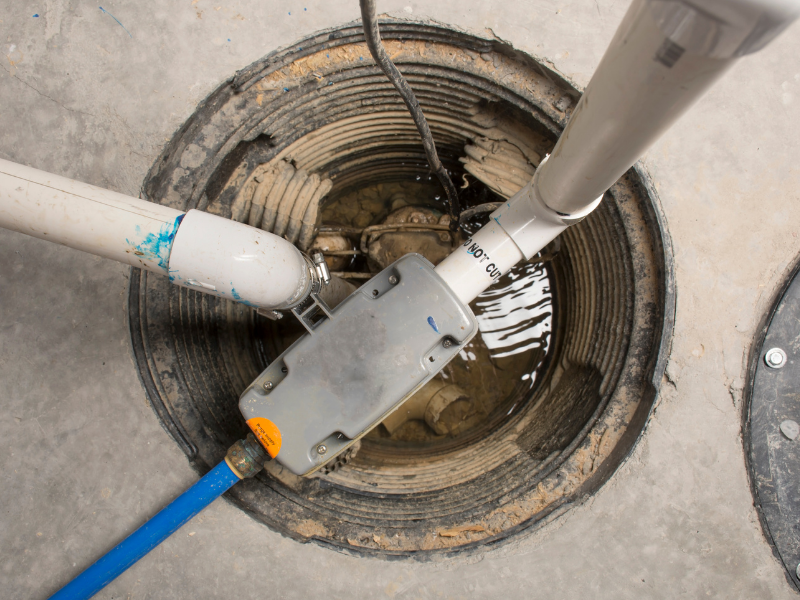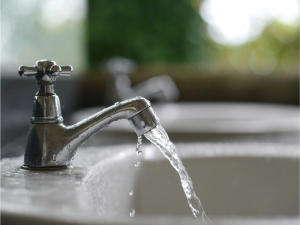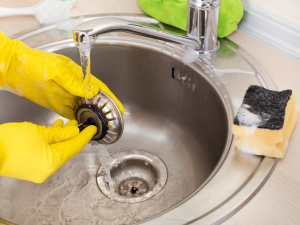Your sump pump is vital to the normalcy of your home, even though you most likely don’t think about it most of the time. Your sump pump is one of the last lines of defense for your home against water damage. So you will need your sump pump to work correctly at all times. And this will require maintenance.
Most pump manufacturers recommend annual maintenance, but some will suggest more than that. This will also depend on the state of your sump pump pit. Dirtier and less cared for pits may need maintenance more often than clean sump pump pits.
Whether you plan to do the maintenance yourself or have a professional, like our expert technicians at Clover Contracting, take care of the task, you should still know how to clean a sump pump and why it is done.
Electricity
The first step will be to ensure that you stay safe or that the professional is safe. You will need to unplug the power cord to the sump pump. Or, if it happens to be hard wired into place, you will need to turn the breaker off that is going to the pump. You don’t ever want to try to maintain, clean, or repair a piece of electrical machinery with the electricity still feeding it.
Turn the water off
You will be working on your sump pump cleaning, so you will want to make sure that if any drains are feeding into the pump pit, they have the water shut off to them, or it is known that no one should use them. You do not want to be halfway through the process of cleaning sump pump pit units out when a washing machine worth of water dumps on you.
Disconnect your pump
Your pump will be connected to a discharge pipe that will presumably go outside your home. You will need to disconnect this line to be able to remove the pump from the sump pump pit.
Wrap the pump
You will likely want to take your pump outside for a good sump pump cleaning. You will probably have to haul the pump through your house. So now is the time to wrap it in plastic, a trash bag, or even towels to keep it from dripping as you haul it outside.
Clean the pump
Now it is time to clean the pump. Take a garden hose and spray it down well. Make sure to get all sides of it and all the openings. You will want to wash all of the debris off that you can, but some of it may not come off so quickly, so you will have to introduce the scrub brush.
Depending on what your sump pump pit looks like, you may need to use a scrub brush to get the hard stuck on gunk and dirt off of the pump. A 50/50 mix of water and vinegar is an excellent sump pump cleaner.
Rinse the pump
Give your sump pump another good spray down with your garden hose. After you scrape off all of the extra gunk, it will need suitable spraying to get the rest of the stuff left before it is ready to be reinstalled back in the pit. And that is how to clean a sump pump — but, you aren’t quite done yet.
Drain the check valve
Depending on the location of your check valve, you may need to use a bucket to catch the water. But you will need to drain the water off of the check valve, which may be a significant amount depending on how long your drain is. Your check valve is a valve that will only allow the water to flow one way. So the water can be pushed out of the drain, but it cannot flow back into your sump pump pit. If your check valve comes apart, you can disassemble it and clean it to ensure it is clean and functioning correctly.
Wet/dry vac the water
You will need to vacuum the water out of your sump pump pit. You may also need to use the shop vac to clean up any water messes that have been made, depending on how bad the spills got.
Clean and inspect the pit
The sump pump pit has removed the water, allowing you to give it a good visual inspection. Ensure there is no severe damage, that nothing is in the pit that can damage your sump pump and that it is not full of dirt that your pump can suck up. Next, spray it down with some disinfectant to ensure it is clean and ready to reinstall.
Put it back together and test
Now you can start putting it all back together. You can place your sump pump back into the pit. You can reconnect the discharge hose, replace any grating or covers on top of the pit, and plug it back in.
Take a bucket of water and slowly fill the sump pump pit until the float switch is activated and the sump pump removes the water from the pit. Once it does, you know the task has been completed successfully! Now you know how to clean a sump pump and all of the components involved.
How often should I clean my sump pump?
This depends on how much it runs and the overall condition that it is in. Clean sump pumps in basements that do not run very often could be cleaned once or twice a year. Dirtier or more active pumps are recommended to be cleaned every three months. If you want to find out more about how often your sump pump should run you can read this article.
Monthly: Make sure there are no blockages around the pump and ensure proper operation
Three months: Clean the pump if necessary, check for potential clogging factors, and ensure proper operation
One year: Clean the pump, inspect for excessive rust and damage, and check the owner’s manual for lubricating steps if necessary.
Can I use a cleaner on my sump pump?
The best type of cleaner for a sump pump will be a 50/50 mix of vinegar and water. It is safe and non-toxic yet still cleans exceptionally well.
You can use bleach if you have excessive smells in or from your pump and sump pump pit. Bleach is not recommended if you have an old cast iron pump, but modern pumps will not be damaged by using a small amount of bleach to clean the system.
When doing maintenance, what should I check for?
- The plugin or GFCI is operating correctly, is not tripped, and is not showing damage.
- The cord to the pump shows no sign of damage.
- Ensure that the pump is in the middle of the pit and that the float can move freely.
- Use at least five gallons of water when testing the pumps actions
- Use vinegar or bleach to remove bacteria and smells
- Test your pump to make sure that it is operating correctly
Ensure that your pump is operating correctly and that there are no apparent signs of damage. Ensure that all electrical connections seem to be functioning without issue and that the check valve is not showing signs of leaking. Maintaining your pump is necessary to ensure that your home is protected from potential moisture issues and is a relatively easy task to complete.
If you ever feel that this is above what you are capable of or if you would like a professional to inspect it to ensure proper operation, please call us. If you want to find out more about sump pumps check out this article.
Good luck and remember to contact Clover Contracting if you need professional assistance!




